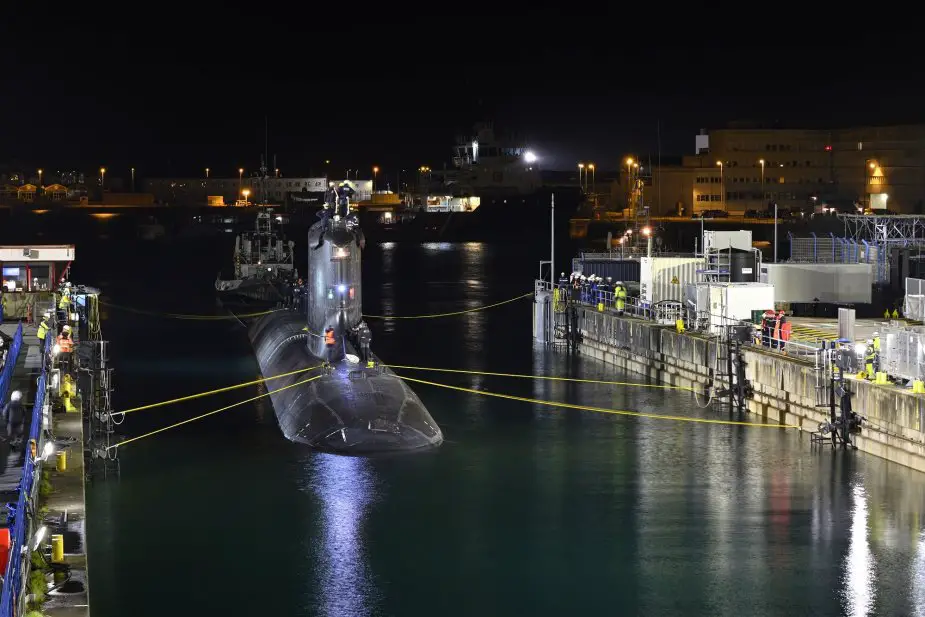Breaking news
French 2nd Barracuda class nuclear submarine Duguay-Trouin starts sea trials.
According to a PR published by Naval Group on March 28, 2023, two years after the delivery of the Suffren, the first Barracuda-class nuclear attack submarine, a new milestone has been reached in the production of these SSNs, with the first sea trials of the Duguay-Trouin. The submarine will now go through different trials to test its performances before its delivery, scheduled later this year.
Follow Navy Recognition on Google News at this link
 Barracuda class nuclear attack submarine Duguay-Trouin. (Picture source: Naval Group)
Barracuda class nuclear attack submarine Duguay-Trouin. (Picture source: Naval Group)
The Duguay-Trouin is the second submarine of the Barracuda program, led by the French defense procurement agency (DGA) in partnership with the French Atomic Energy and Alternative Energy Commission (CEA) for the nuclear boilers part.
This program intends to replace the Ruby-class SSNs currently in service within the French Navy. Naval Group is in charge of the production of these submarines, from their design to their construction, as well as the manufacture of the main components of the nuclear boilers which are developed and produced with TechnicAtome. Naval Group is also in charge of providing logistical support and maintaining the submarines in Toulon.
This series of sea trials follows the divergence of the nuclear reactor which took place in September 2020 and the dock tests carried out since the launch of the submarine in 2021.
The operations successively took place in the assembly hall as well as in the dry and water-filled docks to test equipment and systems. These trials were conducted by joint teams from Naval Group, TechnicAtome and French authorities.
The Barracuda series is well underway: the remaining four submarines in the program (Tourville, de Grasse, Rubis and Casabianca) are all currently under construction, at different stages of completion, and their deliveries will be staggered until 2030.
With a lifespan of more than 30 years, the Barracuda program commits submarine forces until at least 2060, making it one of the major weapons systems of this century.
This submarine is equipped with a nuclear propulsion system which offers a remarkable action range and discretion. It also features communication means allowing its integration within a naval force.
The Suffren type SSN is one of the world’s stealthiest submarines. This discretion, combined with her advanced detection capabilities, guarantees her acoustic superiority.
More discreet, with increased autonomy and better capacities, these submarines are also more manoeuvrable and mobile thanks to their latest generation navigation and communication systems, including a centralised and more automated driving.
Another major innovation is the optronic mast, which replaces the telescopic mast, ensuring better visual information collection and sharing among the crew. This new feature, combined with advanced detection capabilities, guarantees the superiority of these SSNs in their intelligence missions.
The Barracuda-class submarines will also provide the French Navy with a deep strike capability thanks to MBDA's naval cruise missiles (NCM). They are also equipped with the F21 heavyweight torpedo produced by Naval Group and the SM39 anti-ship missile from MBDA.
These SSNs also allow the discreet deployment of Special Forces underwater, in particular thanks to its "divers hatch" and the optional carrying of a dry deck shelter allowing for the deployment of underwater vehicles.
Technical Data
The submarine has a surface displacement of 4,700 tonnes and a diving displacement of 5,200 tonnes. It has a length of 99 meters and a diameter of 8.8 meters.
Duguay-Trouin is equipped with a hybrid propulsion system, consisting of a pressurized water reactor that is derived from the reactors on board the Triomphant-type SSBN and Charles-de-Gaulle aircraft carrier, two propulsion turbines, two turbo generators, and two electric motors.
The crew consists of 65 members and commandos, and the submarine is available for operation for more than 270 days per year.




























